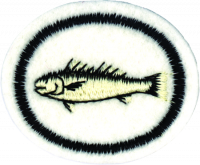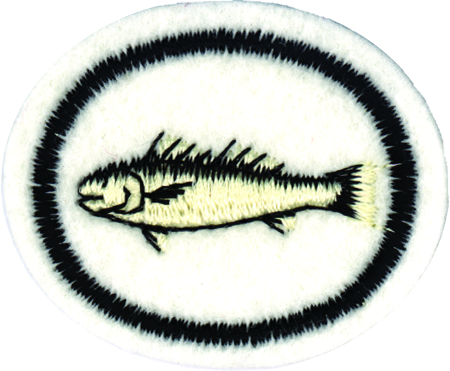Difference between revisions of "AY Honors/Fishes/Answer Key/fr"
From Pathfinder Wiki
(Created page with "{{clear}}") |
(Created page with "==Références== <noinclude>") |
||
| (6 intermediate revisions by the same user not shown) | |||
| Line 163: | Line 163: | ||
{{clear}} | {{clear}} | ||
| − | + | <noinclude></noinclude> | |
| − | <noinclude | ||
| − | |||
{{CloseReq}} <!-- 5 --> | {{CloseReq}} <!-- 5 --> | ||
{{ansreq|page={{#titleparts:{{PAGENAME}}|2|1}}|num=6}} | {{ansreq|page={{#titleparts:{{PAGENAME}}|2|1}}|num=6}} | ||
| − | <noinclude> | + | <noinclude></noinclude> |
| − | </noinclude> | + | <!-- 6. Construire un aquarium d'environ vingt litres avec des plantes et des poissons tropicaux ou du pays, et l’entretenir pendant au moins six mois. --> |
| − | <!-- 6. | ||
| − | |||
| − | |||
| − | + | <noinclude></noinclude> | |
| − | <noinclude | ||
| − | |||
{{CloseReq}} <!-- 6 --> | {{CloseReq}} <!-- 6 --> | ||
{{ansreq|page={{#titleparts:{{PAGENAME}}|2|1}}|num=7}} | {{ansreq|page={{#titleparts:{{PAGENAME}}|2|1}}|num=7}} | ||
| − | <noinclude> | + | <noinclude></noinclude> |
| − | </noinclude> | + | <!-- 7. Noter les effets produits sur les poissons d’aquarium lorsque: --> |
| − | <!-- 7. | + | <noinclude></noinclude> |
| − | <noinclude | ||
| − | |||
{{ansreq|page={{#titleparts:{{PAGENAME}}|2|1}}|num=7a}} | {{ansreq|page={{#titleparts:{{PAGENAME}}|2|1}}|num=7a}} | ||
| − | <noinclude> | + | <noinclude></noinclude> |
| − | </noinclude | ||
| − | |||
| − | |||
| − | + | <noinclude></noinclude> | |
| − | <noinclude | ||
| − | |||
{{CloseReq}} <!-- 7a --> | {{CloseReq}} <!-- 7a --> | ||
{{ansreq|page={{#titleparts:{{PAGENAME}}|2|1}}|num=7b}} <!--T:60--> | {{ansreq|page={{#titleparts:{{PAGENAME}}|2|1}}|num=7b}} <!--T:60--> | ||
| − | <noinclude> | + | <noinclude></noinclude> |
| − | </noinclude | ||
| − | |||
| − | |||
| − | |||
| − | + | <noinclude></noinclude> | |
| − | <noinclude | ||
| − | |||
{{CloseReq}} <!-- 7b --> | {{CloseReq}} <!-- 7b --> | ||
{{ansreq|page={{#titleparts:{{PAGENAME}}|2|1}}|num=7c}} <!--T:61--> | {{ansreq|page={{#titleparts:{{PAGENAME}}|2|1}}|num=7c}} <!--T:61--> | ||
| − | <noinclude> | + | <noinclude></noinclude> |
| − | </noinclude | ||
| − | |||
| − | |||
| − | + | <noinclude></noinclude> | |
| − | <noinclude | ||
| − | |||
{{CloseReq}} <!-- 7c --> | {{CloseReq}} <!-- 7c --> | ||
{{ansreq|page={{#titleparts:{{PAGENAME}}|2|1}}|num=7d}} <!--T:62--> | {{ansreq|page={{#titleparts:{{PAGENAME}}|2|1}}|num=7d}} <!--T:62--> | ||
| − | <noinclude> | + | <noinclude></noinclude> |
| − | </noinclude | ||
| − | |||
| − | + | {{clear}} | |
| − | |||
| − | |||
| − | + | <noinclude></noinclude> | |
| − | <noinclude | ||
| − | |||
{{CloseReq}} <!-- 7d --> | {{CloseReq}} <!-- 7d --> | ||
{{ansreq|page={{#titleparts:{{PAGENAME}}|2|1}}|num=7e}} <!--T:64--> | {{ansreq|page={{#titleparts:{{PAGENAME}}|2|1}}|num=7e}} <!--T:64--> | ||
| − | <noinclude> | + | <noinclude></noinclude> |
| − | </noinclude | ||
| − | |||
| − | + | {{clear}} | |
| − | |||
| − | |||
| − | + | <noinclude></noinclude> | |
| − | <noinclude | ||
| − | |||
{{CloseReq}} <!-- 7e --> | {{CloseReq}} <!-- 7e --> | ||
{{CloseReq}} <!-- 7 --> | {{CloseReq}} <!-- 7 --> | ||
| − | <noinclude> | + | <noinclude></noinclude> |
| − | </noinclude | ||
| − | |||
| − | |||
| − | |||
| − | + | ==Références== | |
| − | == | + | <noinclude></noinclude> |
| − | |||
| − | |||
| − | <noinclude | ||
| − | |||
{{CloseHonorPage}} | {{CloseHonorPage}} | ||
Latest revision as of 03:40, 20 July 2022
1
Nommer dix familles de poissons.
2
Nommer et identifier dix poissons tropicaux (y compris les
poissons d’aquarium).
- a. Expliquer leur façon de frayer.
- b. Connaître le pays dans lequel ils vivent.
3
Nommer dix poissons du pays. Connaître la manière dont ils se nourrissent et dont ils se reproduisent. Nommer cinq poissons de mer et connaître leur manière de se nourrir et de se reproduire.
4
A quoi servent:
4a
Les nageoires dorsales
4b
Les nageoires pectorales
4c
Les nageoires pelviennes
4d
Les nageoires anales
4e
Les nageoires caudales
4f
4g
Les opercules
4h
4i
La vessie natatoire
4j
Les branchies
5
Décrire la manière de soigner et de nourrir les poissons:
- a. Des zones tropicales
- b. Des zones tempérées
6
Construire un aquarium d'environ vingt litres avec des plantes et des poissons tropicaux ou du pays, et l’entretenir pendant au moins six mois.
7
Noter les effets produits sur les poissons d’aquarium lorsque:
7a
Il y a trop de lumière
7b
Il n’y a pas assez de lumière
7c
L’on donne trop de nourriture
7d
La température de l’eau baisse
7e
Il y a trop de plantes et trop de poissons


